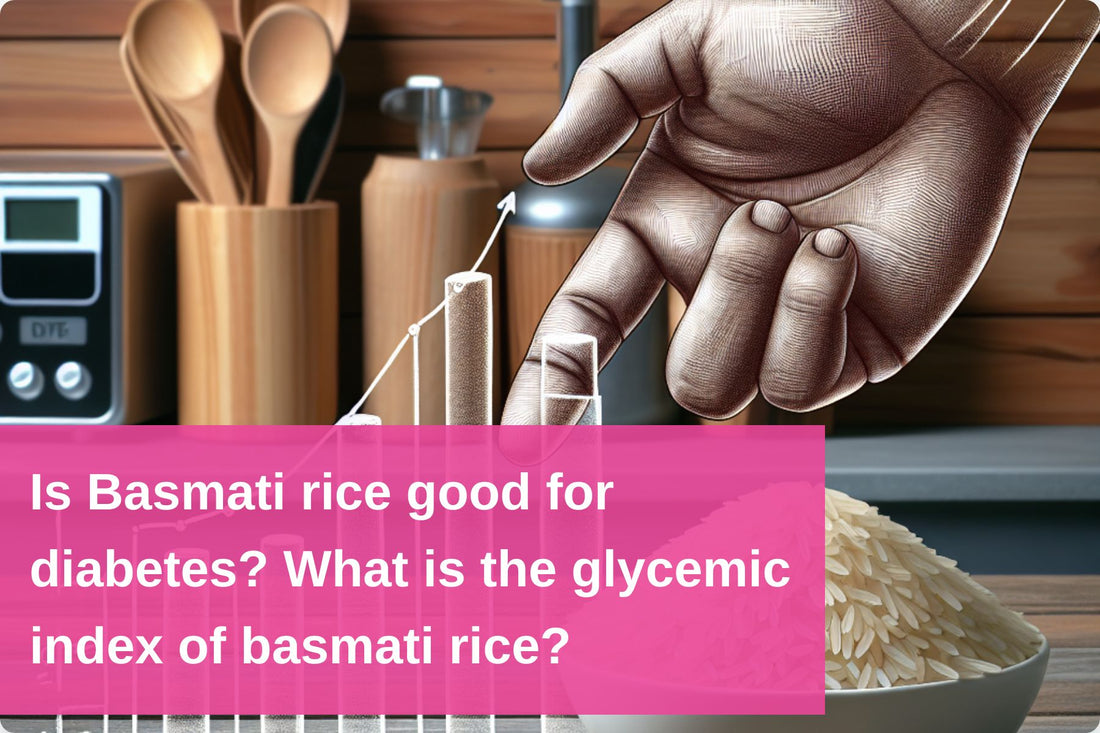Diabetes, a condition that affects millions worldwide, often requires careful consideration of dietary choices. Among the staples in many diets, rice is a source of both sustenance and concern for those managing diabetes. In this exploration, we'll delve into the intricate connection between rice consumption and diabetes, with a particular spotlight on Basmati rice. Understanding the impact of this popular rice variant on blood sugar levels is crucial for individuals navigating the challenges of diabetes.
As we embark on this journey, it's important to note that not all rice varieties are created equal concerning their effects on blood glucose. Basmati rice, known for its aromatic fragrance and distinct long grains, is often considered by many as a potential choice for those with diabetes. But does it truly stand as a beneficial option, or does it pose challenges for individuals aiming to manage their blood sugar levels effectively? Let's unravel the facts and myths surrounding Basmati rice in the context of diabetes to provide you with a clearer perspective on making informed dietary decisions.
Understanding Diabetes and Rice Consumption
Understanding diabetes and rice consumption involves navigating the impact of rice on blood sugar levels, especially considering the glycemic index (GI) and nutritional composition. Here are key points to grasp this relationship:
Glycemic Index (GI): Rice varieties differ in their GI, which measures how quickly carbohydrates in food raise blood sugar levels. Lower GI rice, like Basmati and brown rice, is preferable for managing diabetes as it causes slower and steadier increases in blood sugar compared to high GI rice like white rice.
Impact on Blood Sugar: High GI rice can lead to rapid spikes in blood sugar levels, challenging for diabetes management. Lower GI rice helps maintain more stable blood sugar levels, reducing the risk of complications associated with erratic glucose levels.
Nutritional Composition: Whole grain rice varieties (brown, Basmati, wild rice) retain their bran and germ layers, rich in fiber, vitamins, and minerals. Fiber in rice slows digestion and absorption of carbohydrates, contributing to better blood sugar control and digestive health.
Portion Control and Meal Planning: Controlling portion sizes of rice is crucial to managing carbohydrate intake. Balancing rice with lean proteins, vegetables, and healthy fats helps create balanced meals that minimize blood sugar spikes.
Individual Considerations: Diabetes management is personalized; individuals may respond differently to various rice types and portion sizes. Regular monitoring of blood sugar levels and consultation with healthcare providers are essential for tailoring dietary recommendations.
Understanding how different rice types affect blood sugar levels and incorporating this knowledge into daily meal planning can significantly support effective diabetes management. It involves choosing lower GI and whole grain options, practicing portion control, and ensuring meals are well-balanced with other nutrient-rich foods.
Basmati Rice: Nutritional Profile
Exploring the nutrition of Basmati rice reveals key elements that are important for managing diabetes. Besides its delicious aroma, Basmati rice has specific components that are good for people monitoring their blood sugar levels.
One important aspect is the presence of dietary fibre, which is praised in diets for diabetes. Fibre helps slow down the absorption of glucose, helping to keep blood sugar levels steady. Basmati rice, having more fibre than some other types of rice, might have a milder effect on blood sugar, making it a potentially good choice for people with diabetes.
Carbohydrates, often closely watched in diabetic diets, are also crucial. Basmati rice provides necessary energy while having lower carbohydrates compared to some other types of rice. This can help in better control of blood sugar, fitting the dietary preferences of those managing diabetes.
Furthermore, Basmati rice is not just about one thing. It brings essential nutrients like B vitamins and minerals such as manganese to the table. These nutrients support overall health, going beyond just controlling blood sugar.
Here's nutrition facts chart for Basmati rice, showing the nutrients it has per 100 grams:
Nutrient |
Value per 100g (Cooked) |
Energy |
121 kcal |
Fat |
0.38g |
Saturated Fats |
0.09g |
Monounsaturated Fats |
0.128g |
Polyunsaturated Fats |
0.122g |
Carbohydrates |
25.22g |
Sugar |
0.05g |
Fibre |
0.4g |
Protein |
3.54g |
Sodium |
126mg |
Cholesterol |
0mg |
Potassium |
32mg |
Glycemic Index of Basmati Rice
In the realm of diabetes management, the glycemic index (GI) takes centre stage, offering insights into how different foods impact blood sugar levels. When it comes to Basmati rice, understanding its GI is key to gauging its potential influence on managing diabetes.
Basmati rice, with its long grains and distinct aroma, boasts a lower glycemic index compared to some other rice varieties. The GI measures how quickly a particular food causes blood sugar levels to rise. A lower GI suggests a slower and more controlled increase in blood glucose, a crucial consideration for individuals aiming to manage their diabetes effectively.
Type of Rice |
Glycemic Index (GI) |
|---|---|
Brown Rice |
50 - 55 |
White Rice |
70 - 75 |
Red Rice |
55 - 65 |
Basmati Rice |
50 - 58 |
Jasmine Rice |
68 - 80 |
Wild Rice |
45 - 53 |
Black Rice |
42 - 50 |
This characteristic places Basmati rice in a favourable light for those seeking alternatives with a gentler impact on blood sugar. Its lower GI indicates that the carbohydrates in Basmati rice are digested and absorbed more slowly, potentially contributing to better blood sugar control.
Comparing Basmati rice with other rice types provides valuable context. Traditional white rice, for instance, tends to have a higher GI, causing a quicker surge in blood sugar levels. Brown rice, often hailed for its health benefits, falls in between, with a GI that falls between white and Basmati rice.
In the grand mosaic of diabetes-friendly food choices, understanding the GI of Basmati rice allows individuals to make nuanced decisions aligned with their health objectives. This knowledge empowers them to choose foods that not only satisfy their culinary preferences but also contribute to a balanced and controlled approach to managing blood sugar levels.
Stock Your Kitchen With The Best Basmati Rice!
In wrapping up our exploration of the relationship between Basmati rice and diabetes, let's distil the key insights into a clear and actionable conclusion. The question at the forefront of our discussion: Is Basmati rice a good choice for individuals managing diabetes?
The evidence suggests that Basmati rice, with its lower glycemic index and favourable nutritional profile, can indeed be a thoughtful addition to a diabetic-friendly diet. Its slower impact on blood sugar levels, coupled with the presence of dietary fibre, positions it as a potential ally for those seeking alternatives within the realm of rice consumption.
However, moderation and mindful pairing remain crucial. While Basmati rice offers advantages, it's essential to balance its inclusion with a diverse range of foods, ensuring a well-rounded and nutrient-rich diet. Combining Basmati rice with lean proteins, vegetables, and healthy fats can enhance its benefits and contribute to a more comprehensive approach to diabetes management.
Practical tips for incorporating Basmati rice into a diabetic-friendly diet include paying attention to portion sizes, opting for whole-grain Basmati when available, and considering meal timing. These considerations can contribute to better blood sugar control and overall well-being.
In essence, Basmati rice, when chosen and consumed mindfully, can be a suitable option for individuals navigating the complexities of diabetes. By understanding its glycemic index, nutritional components, and integrating it into a balanced diet, individuals can enjoy the aromatic delight of Basmati rice without compromising their health goals. As with any dietary choice, consultation with healthcare professionals remains essential to tailor recommendations to individual health needs.
This Blog post is an initiative by DiabeSmart, to provide accurate and Nutritionist / Doctor approved information related to Diabetes. DiabeSmart is India's first Food brand designed specifically for Diabetics, that has been clinically tested on Diabetics and Pre-Diabetics to deliver 55% - 70% lower Sugar spikes. DiabeSmart is part of Lo! Foods - India's leading brand for Everyday Functional Health foods.













